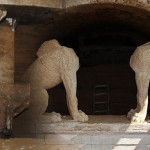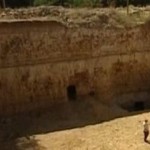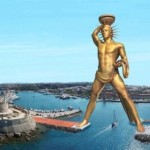Lost Sparta Palace Found Claims Archaeologists
Archaeologists claim they have found the remains of a lost Sparta Palace along with many priceless artifacts in southern Greece.
Sparta was a prominent city-state in ancient Greece, situated on the banks of the Eurotas River in Laconia, in south-eastern Peloponnese. It emerged as a political entity around the 10th century BC, when the invading Dorians subjugated the local, non-Dorian population. Around 650 BC, it rose to become the dominant military land-power in ancient Greece.
Given its military pre-eminence, Sparta was recognized as the overall leader of the combined Greek forces during the Greco-Persian Wars. Between 431 and 404 BC, Sparta was the principal enemy of Athens during the Peloponnesian War, from which it emerged victorious, though at great cost of lives lost. Sparta’s defeat by Thebes in the Battle of Leuctra in 371 BC ended Sparta’s prominent role in Greece. However, it maintained its political independence until the Roman conquest of Greece in 146 BC. It then underwent a long period of decline, especially in the Middle Ages, when many Spartans moved to live in Mystras. Modern Sparta is the capital of the Greek regional unit of Laconia and a center for the processing of goods such as citrus and olives.
Sparta was unique in ancient Greece for its social system and constitution, which completely focused on military training and excellence. Its inhabitants were classified as Spartiates (Spartan citizens, who enjoyed full rights), mothakes (non-Spartan free men raised as Spartans), perioikoi (freedmen), and helots (state-owned serfs, enslaved non-Spartan local population). Spartiates underwent the rigorous agoge training and education regimen, and Spartan phalanges were widely considered to be among the best in battle. Spartan women enjoyed considerably more rights and equality to men than elsewhere in the classical world.
Sparta was the subject of fascination in its own day, as well as in the West following the revival of classical learning. This love or admiration of Sparta is known as Laconism or Laconophilia. At its peak around 500 BC the size of the city would have been some 20,000 – 35,000 free residents, plus numerous helots and perioikoi (“dwellers around”). At 40,000 – 50,000 it was one of the largest Greek cities; however, according to Thucydides, the population of Athens in 431 BC was 360,000 – 610,000, making it unlikely that Athens was smaller than Sparta in 5th century BC.







